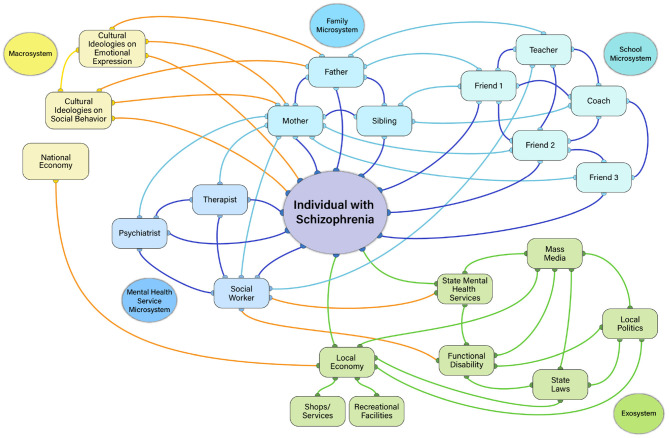Figure 2.
Low negative symptom ecosystem network illustration. In this example, imagine an 18 years old male who is in the first episode of schizophrenia with low negative symptoms. He has three prominent microsystem settings: home, school, mental health services. In the home setting, he has strong social ties with his mother, father, and brother, whom are all highly connected to each other. The mother is a highly central driving force in the individual's microsystem, connecting them (mesosystem) with their mental health services (taking them to appointments with psychiatrist, therapist, social worker, and being part of the treatment) and school (interacting with teachers, coaches, and their friends). The density of connections within and across microsystems, as well as the mother's high centrality within the network is protective against developing negative symptoms. The family is also deeply connected with their culture (macrosystem): the mother, father, and individual with the illness have all adopted beliefs of their ethnic culture regarding emotional expression, socialization, work/motivation, and pleasurable activities. Strong cultural identification and connection with others of the same culture in the neighborhood and school are protective against negative symptoms. At the level of the exosystem, the individual lives in an affluent suburban area that is rich in resources for social, pleasurable, and goal-directed activities (e.g., recreational centers, shops) that are accessible (they have a car, can walk to facilities, there is low crime). Exosystem factors are not prominently acting on the person. They do not receive functional disability benefits from the state, although these are available. Local politics and state laws are less influential on this person because they are not receiving disability services. Yellow, Macrosystem; Green, Exosystem; Light Blue, Microsystem; Dark Blue, Mesosystem; Orange, cross-system interactions; Purple, Person-Level Factors.

